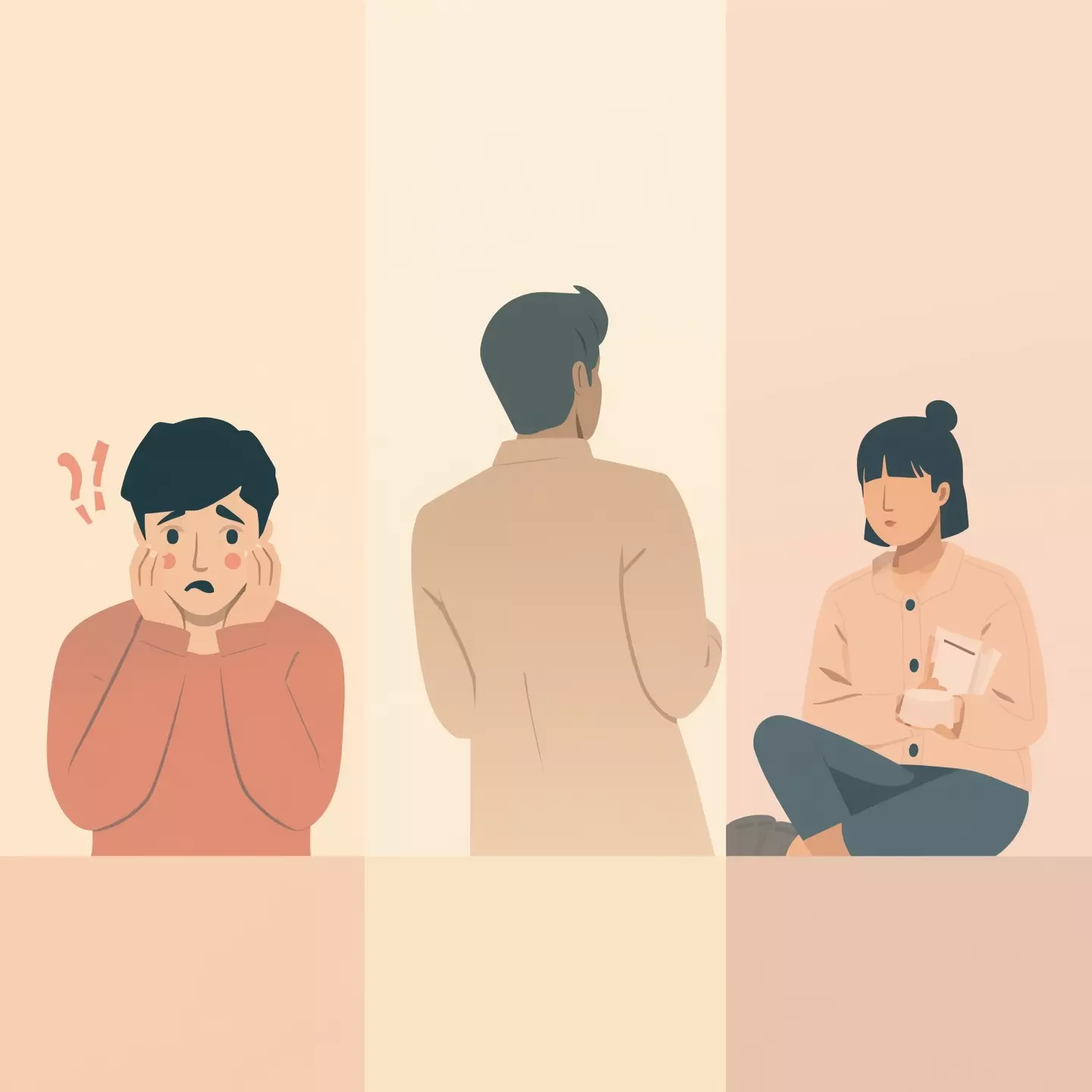Table of Contents
You think you’re being dramatic. Too much. Not “healed enough.” But the truth is, attachment styles and no contact don’t feel the same for everyone—and they’re not supposed to.
Maybe you’re three days in and every hour feels like acid on your chest. Or maybe you felt strangely fine… until you didn’t. Maybe you can’t stop checking your phone. Or maybe you blocked them and convinced yourself it never mattered.
Either way, the silence is doing something to you—and how it feels says everything about how you were taught to love.
This isn’t about strength. It’s about attachment.
How Each Attachment Style Reacts to No Contact
Attachment styles and no contact are deeply intertwined. No Contact isn’t just a breakup tactic—it’s a psychological litmus test.
Each person’s reaction is driven by the invisible rules their nervous system follows when connection is cut.
Anxious Attachment
No Contact feels like punishment. The silence registers as danger. You may feel desperate to fix things, say one last thing, or just check if they still care.
This isn’t weakness—it’s an alarm system built from old wounds. Research confirms this style is prone to rumination, self-blame, and reconnect attempts, even at a personal cost.
Avoidant Attachment
No Contact may bring relief. You’re used to distance, maybe even crave it when emotions run high. You might convince yourself the relationship wasn’t that deep.
But that detachment isn’t peace—it’s your system shutting down to avoid pain. Studies show avoidants minimize feelings and delay grief through distraction.
Secure Attachment
You feel the pain, but not the panic. You talk to friends, reflect, process.
You’ve learned—through life or therapy—that love ending doesn’t mean you’re unlovable. Emotional balance makes space for grief and healing.
Is No Contact Good for Everyone?
Not exactly. NC can be a lifeline—or a landmine—depending on your attachment style.
Anxious Attachment
Without context or support, NC can feel like being emotionally erased. But framed properly (journaling, therapy, lean-in support), NC becomes a healing boundary—not a void.
Avoidant Attachment
NC may strengthen emotional avoidance. True healing often requires sitting with the discomfort, not bypassing it through distraction or indifference.
Secure Attachment
Securely attached people often use NC to grow. They don’t deny the pain—but don’t spiral either. They allow themselves to feel, and still move forward.

Can No Contact Reveal Your Attachment Style?
Yes—loud and clear.
Your reactions during NC expose the hidden map of your relational world:
- Do you panic when they don’t reach out? → Likely Anxious
- Do you dismiss quietly and not think of it again? → Likely Avoidant
- Do you feel grounded sadness and move forward steadily? → Likely Secure
Attachment isn’t a life sentence—it’s a starting point.
No Contact shines a light on your emotional GPS.

No Contact Isn’t a Game – It’s a Healing Strategy
Let’s examine the No Contact strategy in: Science & Psychology, Planning it, Digital Hygiene, Relapses-Cravings & Crashes, Special Cases & Exceptions… and Signs that it’s working +What comes next.
Tap here to read more →
Silence doesn’t lie. It amplifies.
It reveals your fears, patterns, and emotional survival strategies.
But what becomes visible can also be healed.
Whether you cling, shut down, or breathe your way through No Contact, you’re not broken. You’re learning to speak to your nervous system—and maybe, for the first time, speak back with love.
FAQ
Q1. How does each attachment style respond to No Contact?
Anxious types panic and often seek reconnection, avoidant types withdraw and suppress feelings, while secure types grieve and reflect healthily.
Q2. Is No Contact healthy for everyone?
Not always. It can aid healing for secure and some avoidant individuals, but may intensify distress in those with anxious attachment unless guided.
Q3. Can your reaction to No Contact reveal your attachment style?
Yes. Patterns of panic, withdrawal, or calmness during NC often reflect underlying attachment tendencies.
Q4. Can attachment styles be changed or healed?
Yes. Through therapy, self-awareness, and secure relationships, attachment styles can shift toward greater security over time.
Scientific Sources
-
Gehl et al. (2023): Attachment and Breakup Distress: The Mediating Role of Coping Strategies
Key Finding: Anxiously attached individuals used self-punishment and accommodation post-breakup, leading to increased depressive and anxious symptoms.
Why Relevant: Highlights how anxious attachment can intensify distress during No Contact, reinforcing the need for tailored support.
https://www.ncbi.nlm.nih.gov/articles/PMC10727987/ -
T.J. Collins et al. (2012): Attachment, breakup strategies, and associated outcomes
Key Finding: Anxious individuals sought reconnection while avoidant individuals favored distancing strategies after breakups.
Why Relevant: Demonstrates how attachment styles predict reactions under No Contact—key for emotional pattern mapping.
https://www.sciencedirect.com/science/article/abs/pii/S0092656612000098 -
Hazan & Shaver (summarized) (2025): Attachment in Adults (summary via Wikipedia)
Key Finding: Secure individuals seek support, avoidants withdraw, and anxious types experience greater emotional turmoil after separation.
Why Relevant: Frames No Contact as a revealing lens into attachment behaviors post-breakup across styles.
https://en.wikipedia.org/wiki/Attachment_in_adults
- The Surprising Science of Attachment Styles and No Contact: How Anxious, Avoidant & Secure Types Really Heal

- Limerence vs Love: The Healing Power of No Contact to Stop Obsession

- Does No Contact Really Work? Powerful Science-Backed Answers for Healing

- No Contact for Queer Folks: Healing Identity, Breaking Craving Loops

- No Contact for Transgender People: A Powerful Healing Strategy for Nervous-System Safety

- No Contact for Lesbian Women: Powerful Psychology Behind Intense Bonding & Healing

- No Contact for Gay Men: Powerful Healing from Limerence, Scarcity, and Scene Overlap

- No Contact for Women: Why First-Month Breakup Pain Feels Harsher but Healing Comes Faster

- No Contact for Men: The Powerful Science Behind Dopamine Withdrawal & Healing


Leave a Reply